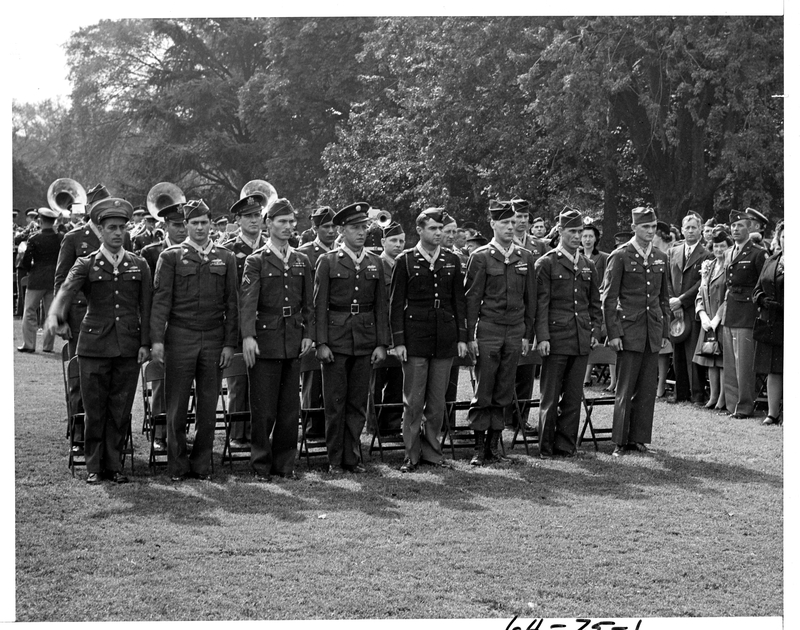|
Chris Carr (Medal Of Honor)
Chris Carr (born Christos H. Karaberis, April 6, 1914 – September 16, 1970) was a United States Army soldier and a recipient of the United States military's highest decoration—the Medal of Honor—for his actions in World War II. Biography Carr was born Christos H. Karaberis in Manchester, New Hampshire. He joined the Army from his hometown in October 1942 and by October 1, 1944, was serving as a sergeant in Company L, 337th Infantry Regiment, 85th Infantry Division. On that day and the following day, near Guignola, Italy, he single-handedly attacked and captured five German machine gun emplacements. For these actions, he was awarded the Medal of Honor a year later on November 1, 1945. After the war, he legally changed his name from "Christos Karaberis" to "Chris Carr". He reached the rank of sergeant first class and served in the Korean War before leaving the Army. Carr died at age 56 and was buried in Los Angeles National Cemetery, Los Angeles, California. Awards and ... [...More Info...] [...Related Items...] OR: [Wikipedia] [Google] [Baidu] |
Manchester, New Hampshire
Manchester is a city in Hillsborough County, New Hampshire, United States. It is the most populous city in New Hampshire. At the 2020 census, the city had a population of 115,644. Manchester is, along with Nashua, one of two seats of New Hampshire's most populous county, Hillsborough County. Manchester lies near the northern end of the Northeast megalopolis and straddles the banks of the Merrimack River. It was first named by the merchant and inventor Samuel Blodgett, namesake of Samuel Blodget Park and Blodget Street in the city's North End. His vision was to create a great industrial center similar to that of the original Manchester in England, which was the world's first industrialized city. History The native Pennacook people called Amoskeag Falls on the Merrimack River—the area that became the heart of Manchester—''Namaoskeag'', meaning "good fishing place". In 1722, John Goffe, John Goffe III settled beside Cohas Brook, later building a dam and sawmill at what was ... [...More Info...] [...Related Items...] OR: [Wikipedia] [Google] [Baidu] |
